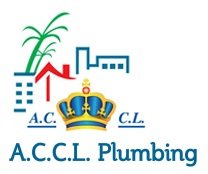Rainwater harvesting is the practice of collecting and storing rainwater for non-potable uses, reducing the demand on municipal water supplies and alleviating pressure on stormwater drainage systems. This eco-friendly method is gaining popularity worldwide as a crucial component of water conservation strategies.
Benefits of Rainwater Harvesting
– Water Conservation: Harvesting rainwater reduces the amount of water used from municipal supplies, conserving water for essential purposes.
– Stormwater Management: Rainwater harvesting decreases stormwater runoff, minimizing the risk of urban flooding and preventing soil erosion.
– Environmental Benefits: By capturing rainwater, we can reduce pollutants entering waterways, supporting ecosystem health and promoting sustainable water management.
– Cost Savings: Using harvested rainwater for non-potable purposes like irrigation and toilet flushing can significantly lower water bills.
Components of a Rainwater Harvesting System
– Catchment Area: Rooftops or other surfaces that collect rainwater.
– Gutters and Downspouts: Channel rainwater from the catchment area to storage tanks.
– Storage Tanks: Hold collected rainwater for later use.
– Filtration Systems: Remove debris and contaminants from harvested rainwater.
– First-Flush Diverters: Divert initial runoff, ensuring clean water storage.¹ ²
Types of Rainwater Harvesting Systems
– Rain Barrels: Simple, affordable solutions for small-scale harvesting.
– Cisterns: Larger storage tanks for more extensive water collection.
– Subsurface Harvesting: Stores rainwater underground, ideal for areas with limited surface space.
– Surface Runoff Harvesting: Captures rainwater from open spaces, useful for irrigation purposes.³ ⁴
Uses of Harvested Rainwater
– Irrigation: Water plants, trees, and gardens with harvested rainwater.
– Toilet Flushing: Use rainwater for toilet flushing, reducing potable water consumption.
– Laundry: Harvested rainwater can be used for washing clothes.
– Industrial Processes: Suitable for various industrial applications, such as cooling systems.⁵
Implementing Rainwater Harvesting
Before installing a rainwater harvesting system, consider the following:
– Local Regulations: Check with local authorities for specific regulations and guidelines.
– System Design: Ensure proper design and installation to prevent contamination and ensure water quality.
– Maintenance: Regularly inspect and maintain the system to ensure optimal performance.

